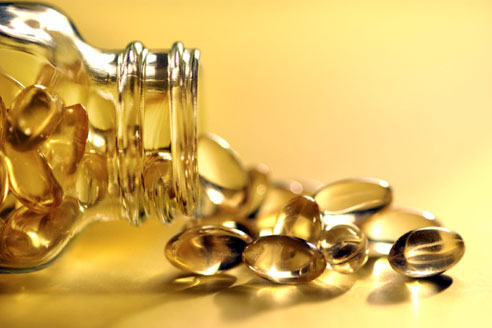23rd Dec 2014
What Makes Some Omega-3s Supplements Much Better Than Others
Here are 4 important indicators you need to know about when purchasing your Omega-3 supplements, in order to make sure you are getting an effective, high-quality product:

Pay attention to the source of the oil and type of fish
You ideally want to get all, or at least most, of your Omega-3s from fish sources, since the Omega-3 from these foods are concerted and used by the body much more easily. Consume fish like “ Wild Alaskan Pollock”, sardines, anchovies, mackerel and Salmon frequently. Also look for supplements made from oil that came from these fish, as well as Krill.
Keep in mind that farm factory-raised fish often do not have the same health benefits as wild caught fish do. For example, studies have shown that farm raised salmon are lower in omega-3s than wild Alaskan salmon and also contain more harmful pesticides and even antioxidants. Farm raised fish are usually raised in tightly packed, unsanitary water tanks where they are fed an unnatural diet of grain, which makes them less healthy and therefore less of a good source of healthy fatty acids. 1,2
Check the supplement needs GOED and IFOS standards
Look for an indication on your supplement package that it meets “GOED” standards. GOED stands for Global Organization for EPA and DHA Omega-3s. It was developed to help ensure that omega-3 oils reaching consumers were both safe and of high quality.
IFOS stands for International Fish Oil Standards. Similarly to GOED, IFOS is another organization that was developed to test fish oil supplements and guarantee their potency, purity, freshness, and safety for consumers. IFOS tests products in order to make sure that the kinds being sold are free of various harmful contaminants (like mercury, lead, radiation and arsenic for example- which can be absorbed into fish from contaminated waters due to pollution run off). IFOS also ensures that the fish oil is still fresh and has not gone rancid, which can easily occur if a product sits on shelves for too long.
Look for 75% Omega-3s and above
Make sure your supplement is in fact very high in absorb-able Omega-3s; look for the indication that it is at least 75% Omega-3 in the form of DHA and EPA. Often times a low-quality supplement will not contain the amount of omega-3s that are advertised on the packaging, which is why certain standards have been put into place to test and verify the quality of various brands.
Because many supplement brands use other sources of omegas as “fillers” (for example, Omega-6s or Omega-7s) in their products, GOED and IFOS ensure that the active ingredient in actually present in the amount listed on the supplement’s package. While other types of omegas have some health benefits, they are not as widespread as omega-3’s health benefits. Many people also get too many other types of omega acids from their diet, but are lacking omega-3s, and the proper balance of different omega acids in the diet makes a big differences in terms of health.
Look for a capsule made with enteric coating
Enteric coating is used on Omega-3 supplements in order to do 2 things: to reduce uncomfortable and embarrassing “fish burps” that occur after taking fish oil, and secondly to increase the absorption of the Omega-3s by blocking the acid in the stomach from breaking them down too early in the digestion process.
References:
- “The Dangers of Farm Fish”. DrAxe.com. Retrieved from http://draxe.com/the-dangers-of-farmed-fish/
- “Farmed Salmon and Human Health”. Pure Salmon Campaign. Retrieved from http://www.puresalmon.org/human_health.html
